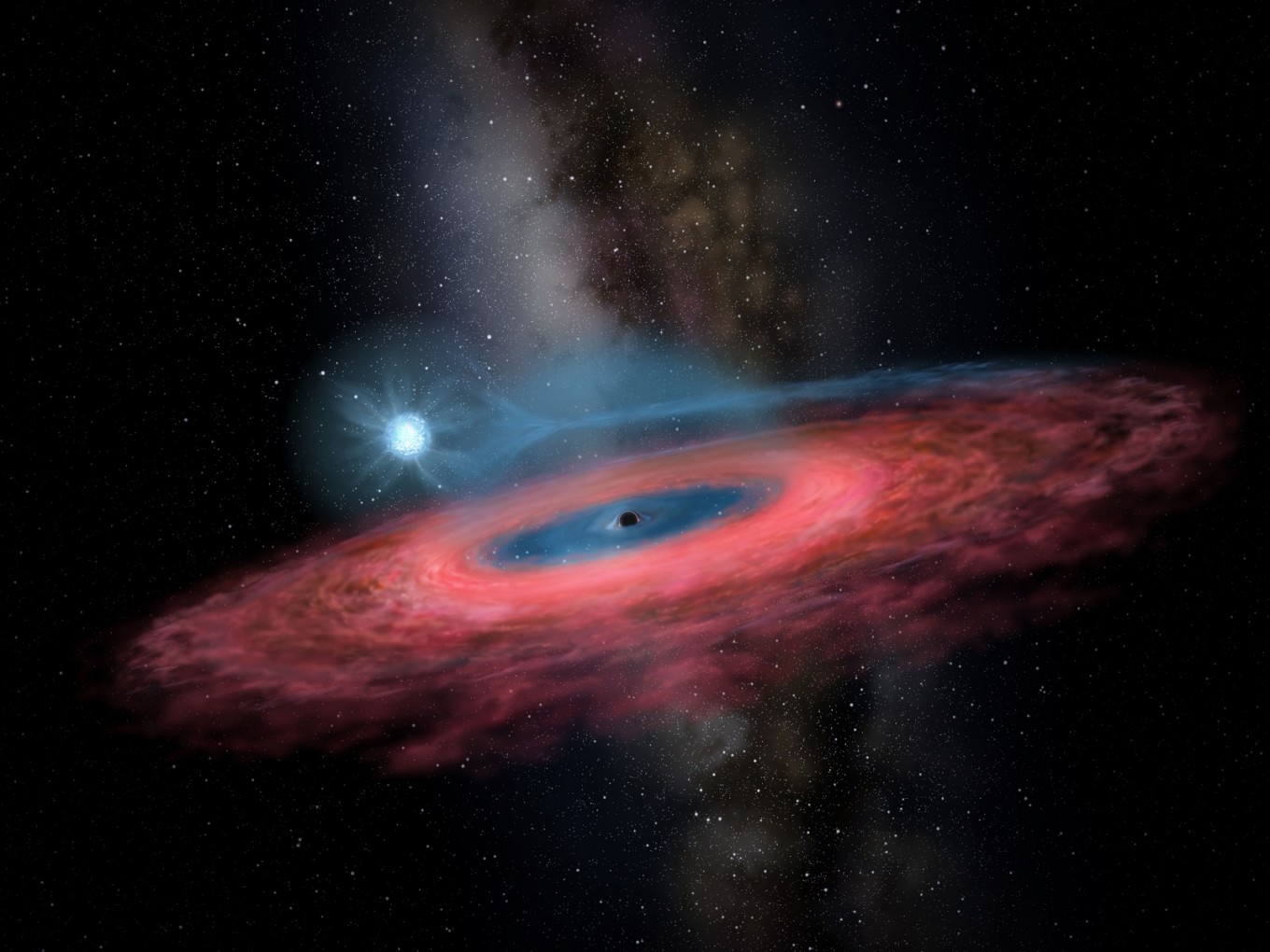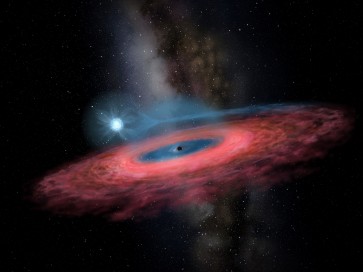Popular Reads
Top Results
Can't find what you're looking for?
View all search resultsPopular Reads
Top Results
Can't find what you're looking for?
View all search resultsAstronomers discover one of biggest black holes ever recorded
The ultramassive black hole, one of just four ever observed, is more than 30 billion times the mass of the Sun, a new study said.
Change text size
Gift Premium Articles
to Anyone
 This handout received from the Beijing Planetarium via the China Academy of Sciences on November 26, 2019 shows a rendering by artist Yu Jingchuan of the accretion of gas onto a stellar black hole from its blue companion star, through a truncated accretion disk. (Beijing Planetarium via the China Academy of Sciences/AFP/Yu Jingchuan )
This handout received from the Beijing Planetarium via the China Academy of Sciences on November 26, 2019 shows a rendering by artist Yu Jingchuan of the accretion of gas onto a stellar black hole from its blue companion star, through a truncated accretion disk. (Beijing Planetarium via the China Academy of Sciences/AFP/Yu Jingchuan )
O
ne of the largest black holes ever recorded has been discovered using a new technique that could spot thousands more of the insatiable celestial monsters in the coming years, according to astronomers.
The ultramassive black hole, one of just four ever observed, is more than 30 billion times the mass of the Sun, a new study said.
It is the first black hole ever observed using a phenomenon called gravitational lensing, in which light travelling towards us from a distant galaxy appears to magnify and bend inwards, giving away the presence of a dark giant.
James Nightingale, an astronomer at the UK's Durham University and the study's lead author, told AFP the process was "similar to shining light through the base of a wine glass".
He said it was "very fortuitous" that the light of a galaxy in the distant universe travelled extremely close to this black hole, which is roughly two billion light years from Earth.
It could even be the biggest black hole ever recorded, but it was difficult to say for sure given the varying techniques and uncertainties involved, he added.
Supermassive black holes sit at the centre of galaxies using their vast gravitational pull to gobble up stars like specks of dust, not even allowing light to escape.


















